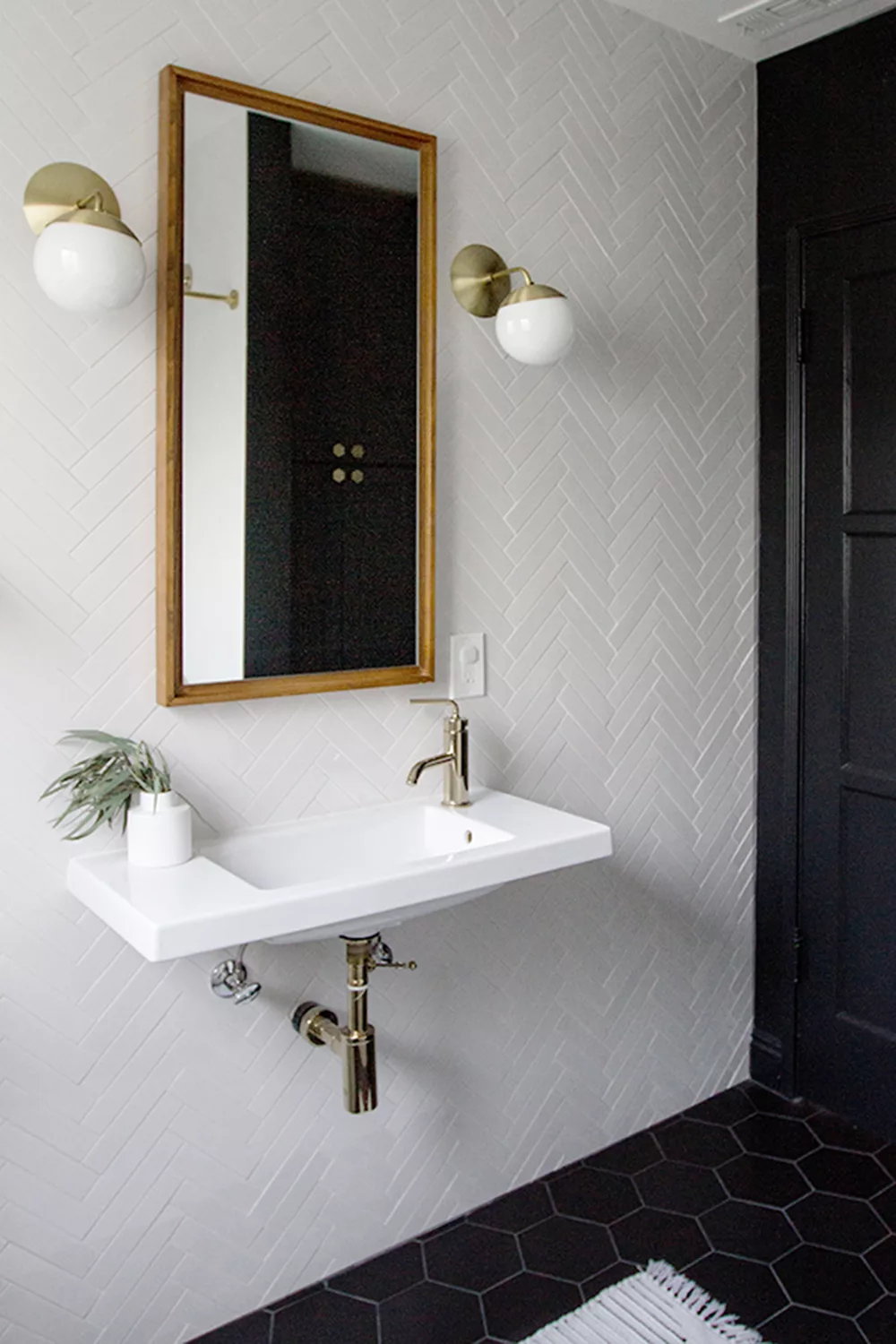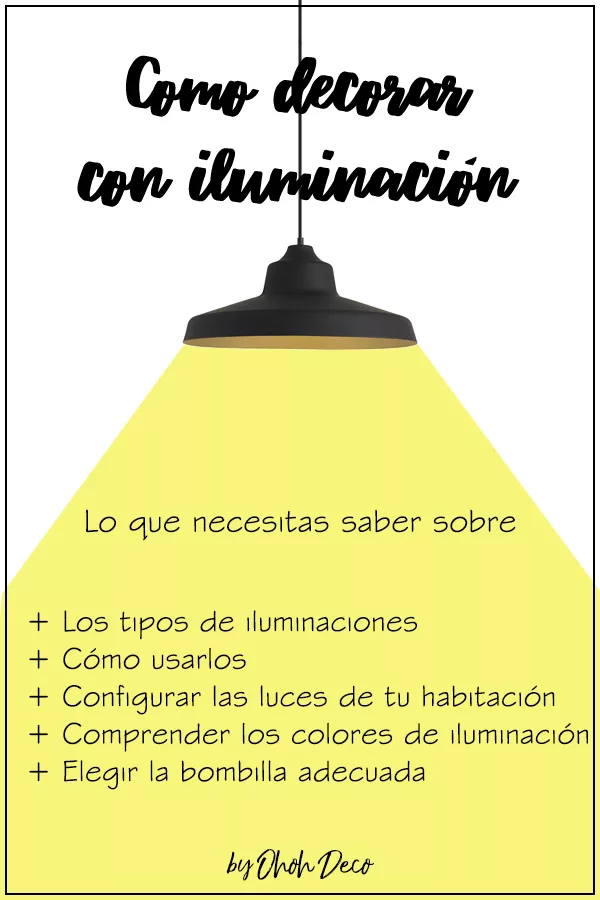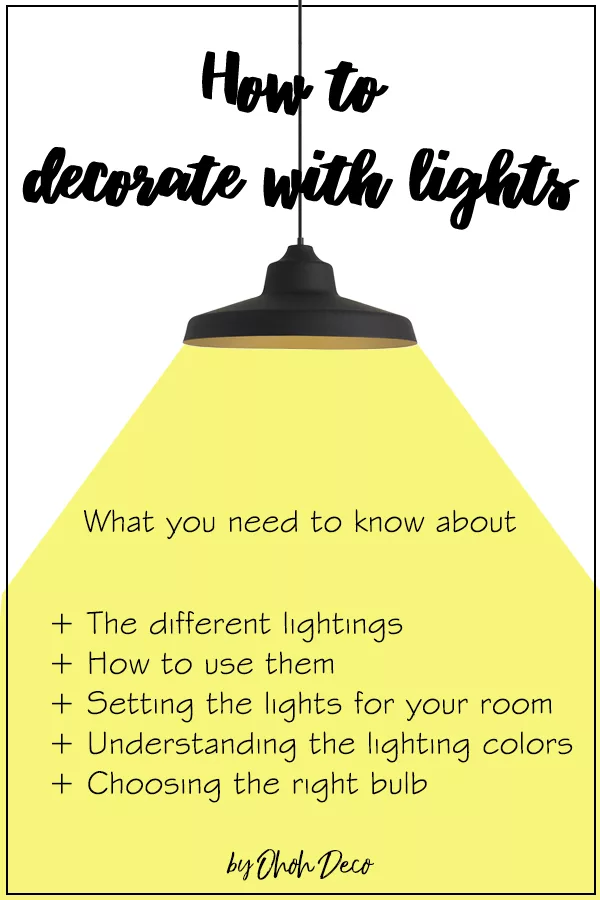* * * Desplázate hacia abajo para el español – Scroll down for Spanish ***
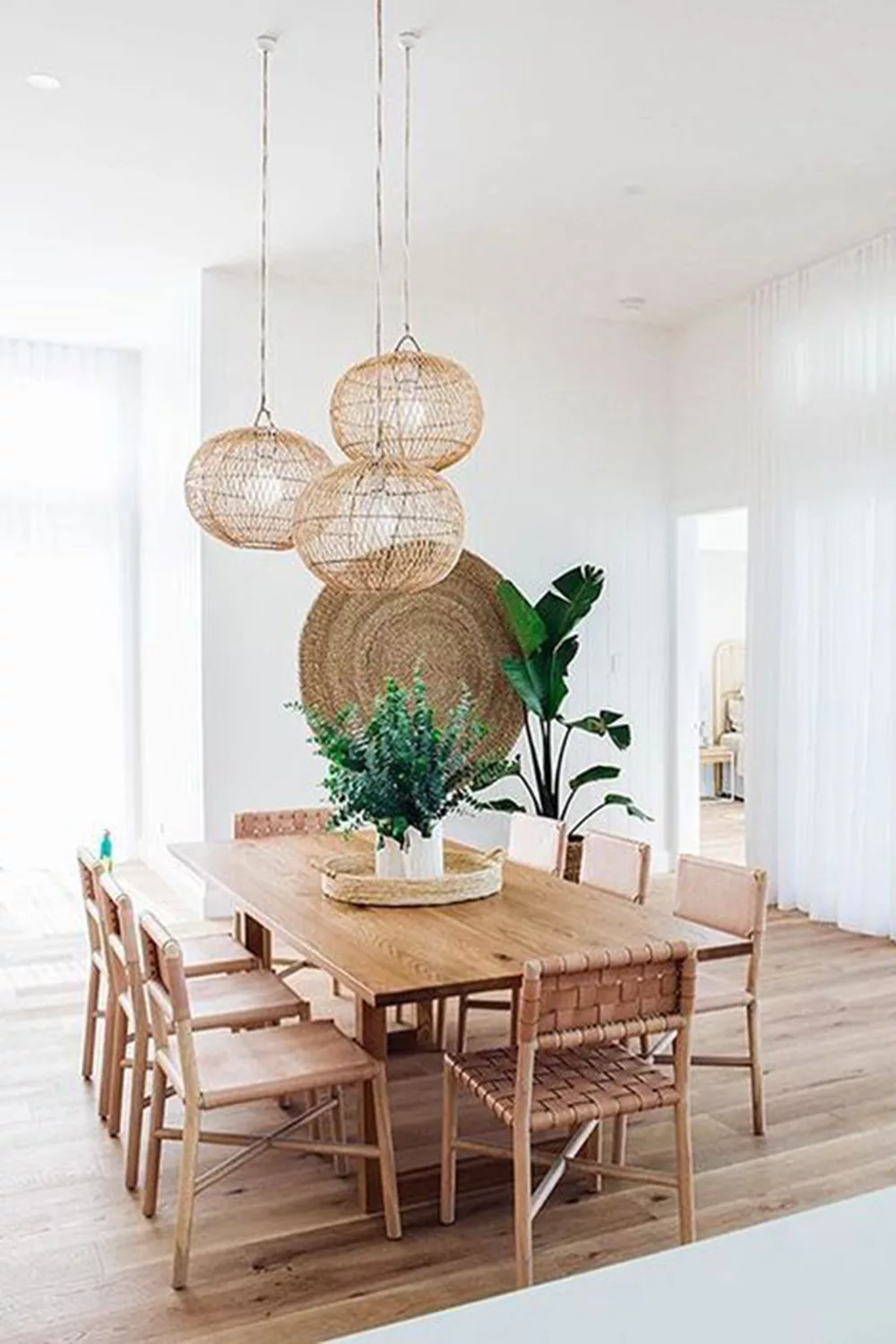
Wicker & rope pendant lamp HERE – picture source –
You know I have a passion for lighting and it’s also one of my favorite DIY to make. Light is very important to create a room atmosphere. It is essential to know the different kinds of interior lighting so you can create the best room decor. If you learn how to decorate with lamps you will know which accurate lighting works according to the room use, and how to highlight your decor elements. In this post I will tell you everything you need to know to get the most out of your home and create a pleasant and functional atmosphere. I will also suggest you a few option of affordable lighting, and if you prefer to craft you own light be sure the check my recap post about DIY lighting.
Different types of light colors
The color temperature represents the hue of a light source and is expressed in degrees Kelvin. This characterizes the amount of red, yellow, blue and pure white produced by the lamp. The effect is often characterized by the terms hot (warm white), neutral, and cold (cold white). To give you a concrete example, just imagine the light produced by the sun at different times of the day: at noon, the light is at its highest and most powerful: natural white color, at sunset, the light takes on a more yellow-orange tone: warm white color.
When you read the lighting package the degrees Kelvin (K) give you the indication about the color: the lower the color temperature, the more light is orange-red ( between 2700 and 3000K) . When the color temperature is high, the tone of the light is blue (between 5800 and 6400K), and a neutral light color will be between 3900 and 4500K.
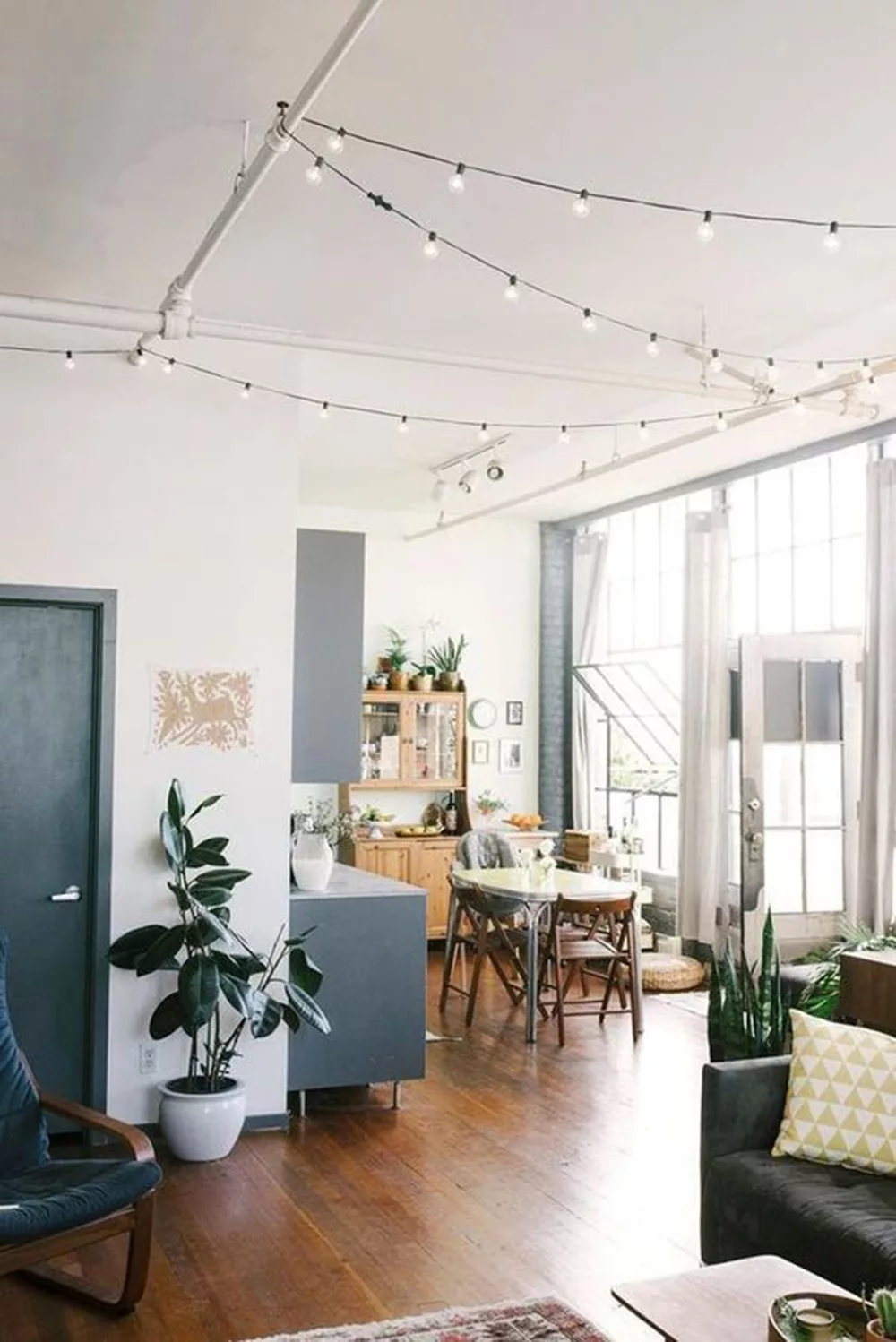
String lights HERE – picture source –
How to choose the right bulb?
Beside the color temperatures there is some other indications you need to read on the bulb package in order to choose accurately.
Watts (W): it measures the energy used. The higher the number is, the more it consumes energy.
Lumens (lm): it indicates the brightness of the bulb. The higher is the value, the more the bulb illuminates.
It is also necessary to take into account the lifetime of the bulb. A halogen bulb can last between two and four years, an energy saving bulb beyond six years, and a LED bulb can last for more than 20 years.
When you buy light bulbs you will see that the package indicates what kind of light color it emits (K), how much it consumes (W) and how bright is the light (lm), so when choosing your bulbs (it seems a joke but in decoration is important) keep in mind:
- The intensity of light (lm): Do you need a very bright light, for a working area or a kitchen, or do you prefer a soft and relaxing light, for a living room or a bedroom?
- The environment you want to create (K): The warm light is ideal for cozy and warm environments, the cold light is better for work environments.
- The power consumption (W): In living rooms where lamps remain lit for a long time it is preferable to choose bulbs with low energy consumption, such as LED or energy saving bulb.
- The ignition time: The led bulbs turn on immediately but the energy saving bulbs take several seconds to reach the total ignition, so they are not the best for passage areas where the light is turned on and off quickly as corridors, pantries, etc.
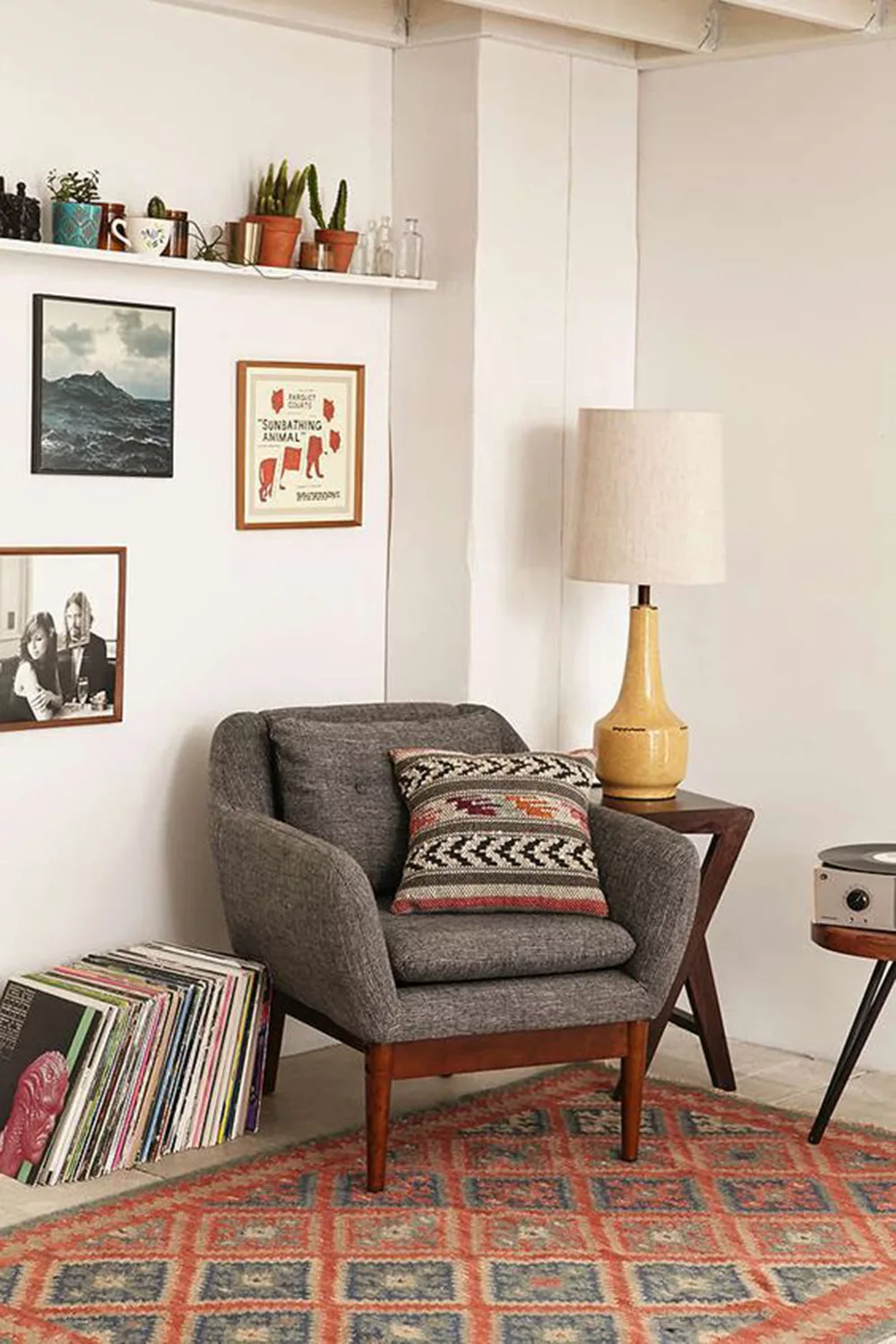
Statement table lamp HERE – picture source –
The different types of lighting and their functions
General illumination
The general lighting has a practical function, which is to illuminate the entire space evenly. It’s usually the light you turn on with the switch next to the door, like ceiling mounted fixture, chandelier, and recessed lighting.
Accent illumination
The ambient light is softer and serves to give a more warm and relaxed atmosphere to your decor. It is a diffuse lighting that creates a darker environment than the general one. A cozy atmosphere can be created using wall-mounted fixture, floor lamp and table lamp. You can privilege fabric lampshades, and can also use a dimmer to adjust the intensity of the light if necessary.
Task illumination
It illuminates a specific area where a specific function is performed, as a light on top of the dining table, a lamp on a desk, a floor lamp to read on the couch, or the lights on top of the kitchen counter are some examples. It’s preferable to choose a directional light with good brightness.
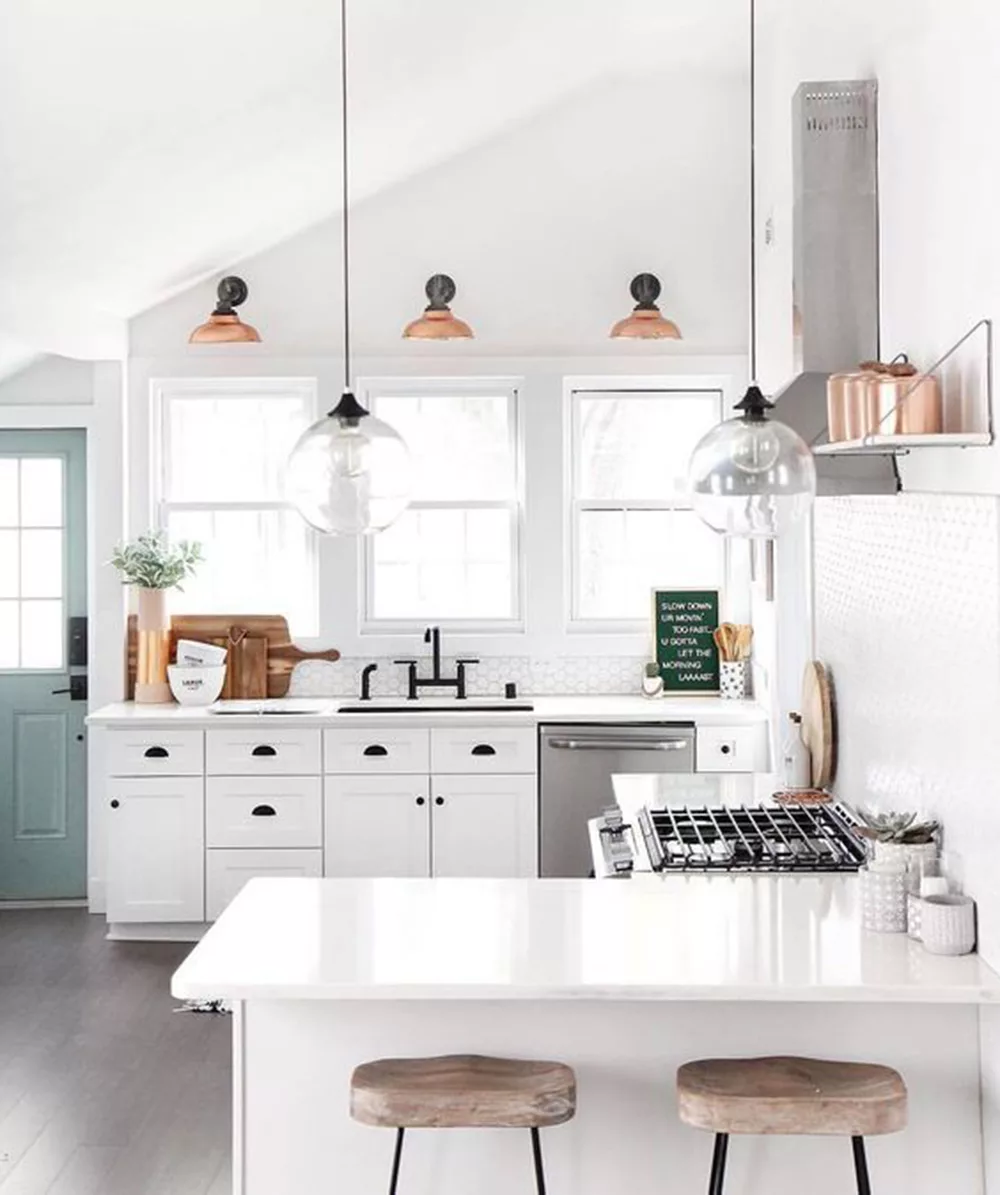
Copper wall sconce HERE and glass pendant light HERE – picture source –
How to set up the lighting?
You know how to choose bulbs and the different kind of lighting, so what do your need to take in consideration when setting up the lighting of a room?
Think how you will use the room and what task you want to accomplish in the space. Ask yourself the following questions to decide what kind of lighting you need:
- There will be a need to light some particular area? Like a counter top, a table or a reading corner as example.
- What is the general mood you want to give to the piece? Do you need maximum lighting to easily accomplish certain tasks, such as the kitchen or the bathroom. Or it is rather a piece of relaxation where you can privilege a coziest lighting, like a living room or a TV corner.
- How big is the room? Is one ceiling lighting enough for the general lighting? Which corner of the room do you want to highlight with an accent illumination? If required, where do you need the place the task light ?
- If you work on a room renovation, check the location of the plugs to organize the space, no one likes having electric extensions in every corner.
It’s normal to use two or three types of lighting in each room. Avoid lighting a corner too much and leaving another completely dark. Try to distributes the different types of lamps throughout the room, and highlighting the decor statement pieces. Do not fall into excess either, and try to respect a certain unity of style between lighting piece.
Place different lamps at different heights, play with the vertical space to get the most out of your decoration. Light can visually transform space. For example, putting lamps that emit light to the ceiling makes the room seem larger and placing ceiling lamps that hang low makes the ceilings seem higher.
Choose the lamps that light up the space at night and are pretty the day, consider these two aspects when buying. You don’t want a pretty chandelier that barely give you light at night, or vice versa, a chines lantern that light well but it’s sorely lacking in style (even if it’s customizable with a good DIY :).
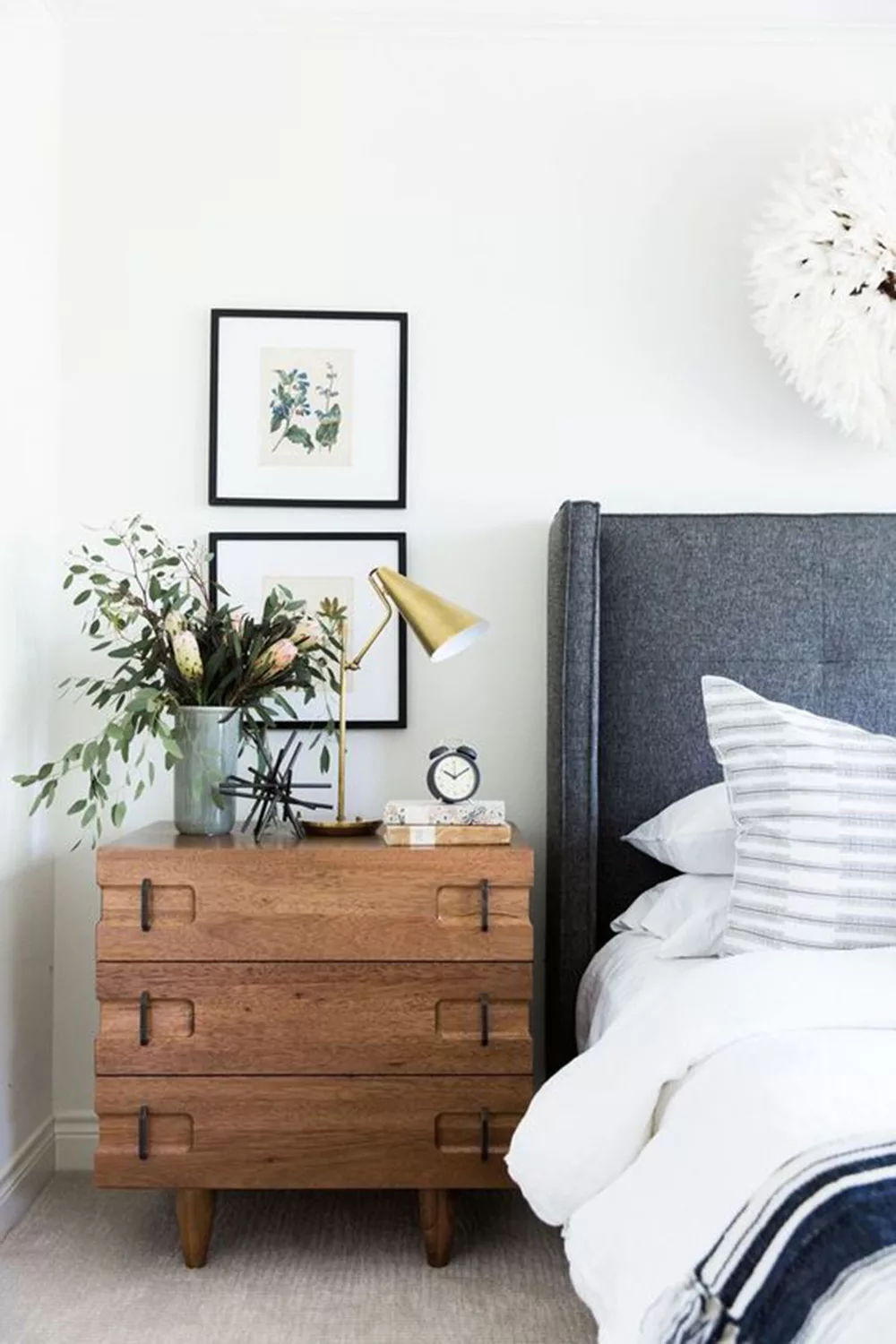
Conical table lamp HERE – picture source –
One room at the time
I give you a check list of the lighting usually placed in every room. The list is not exhaustive and you can adapt it according to your needs. It’s just to help you thinking about the different uses of each room and the different lighting that are usually required.
Living room: General illumination, ambient light on side tables or sideboard, task light for a reading nook, like a floor lamp for example.
Dining room: General illumination, pendant light above the table, possibly ambient light on the dresser.
Kitchen: Bright general illumination, under cabinet lighting, pendant light above bar or countertop.
Bedroom: Soft general illumination, task light on the nightstand.
Bathroom: General illumination, task light above the sink, like a wall sconce. Prefers a neutral light color for this space, it’s the light closest to the outdoor natural light and it gives a better view of colors, which is convenient for combining clothes or putting on makeup.
Office: Bright general illumination, task light on the desk, and for a reading nook if needed.
TV room: Soft general illumination, ambient light on side table or side board. Pay attention to the reflection of the lamps on the screen.
Entrance and corridors: General illumination, you can also add an small ambient light that stays on if you don’t like dark corridor.
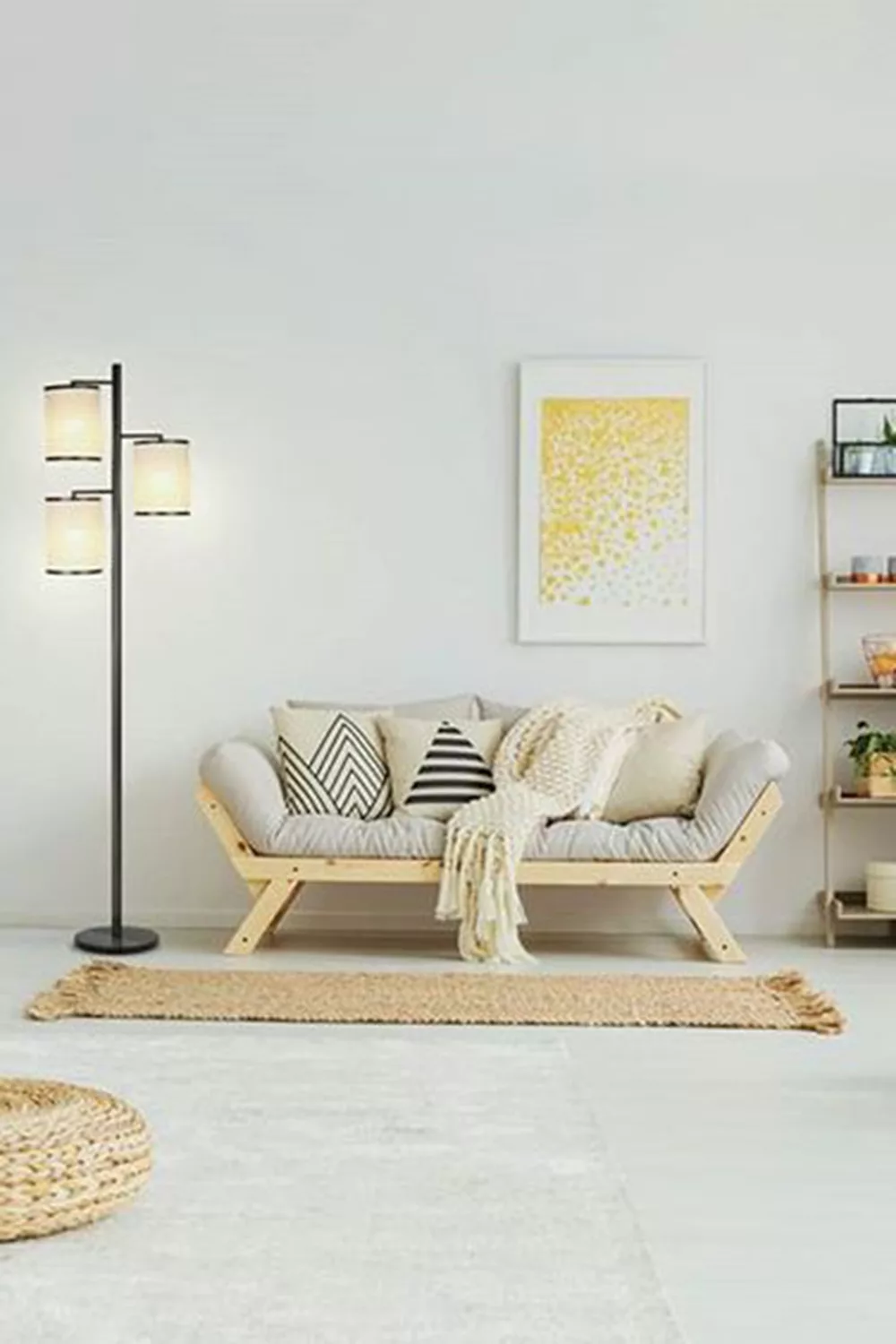
Floor lamp HERE – picture source –
* * * Versión español aquí * * *
Sabes que tengo una pasión por la iluminación y que hacer lamparas es uno de mis DIY favoritos. Porque la luz es muy importante para crear una atmósfera en cada habitación. Es esencial conocer los diferentes tipos de iluminación interior para que la luz sea óptima para el espacio. Si aprendes a decorar con lámparas, sabrás qué iluminación funciona de acuerdo con el uso de cada sala y cómo resaltar sus elementos de decoración. En este post, te contaré todo lo que necesita saber para aprovechar al máximo tu hogar y crear un ambiente agradable y funcional. También te voy a sugerir algunas opciones de iluminación de precios asequibles, y si prefieres crear tus propias lamparas, asegúrate de consultar mi post sobre las lamparas DIY.
Diferentes tipos de colores de iluminación
La temperatura del color representa el tono de una fuente de luz y se expresa en grados Kelvin. Esto caracteriza la cantidad de rojo, amarillo, azul y blanco puro producido por la lámpara. El efecto a menudo se caracteriza por los términos caliente (blanco cálido), neutro y frío (blanco frío).
Para darte un ejemplo concreto, solo imagina la luz producida por el sol en diferentes momentos del día: al mediodía, la luz es más alta y más poderosa: color blanco natural, al atardecer, la luz adquiere un tono más amarillento, tono naranja: color blanco cálido.
Cuando lees la envoltura de una lampara, los grados Kelvin (K) le dan la indicación sobre el color: cuanto menor es la temperatura del color, la luz es de color naranja-rojo (entre 2700 y 3000 K). Cuando la temperatura del color es alta, el tono de la luz es azul (entre 5800 y 6400K) y el color de luz neutral estará entre 3900 y 4500K.
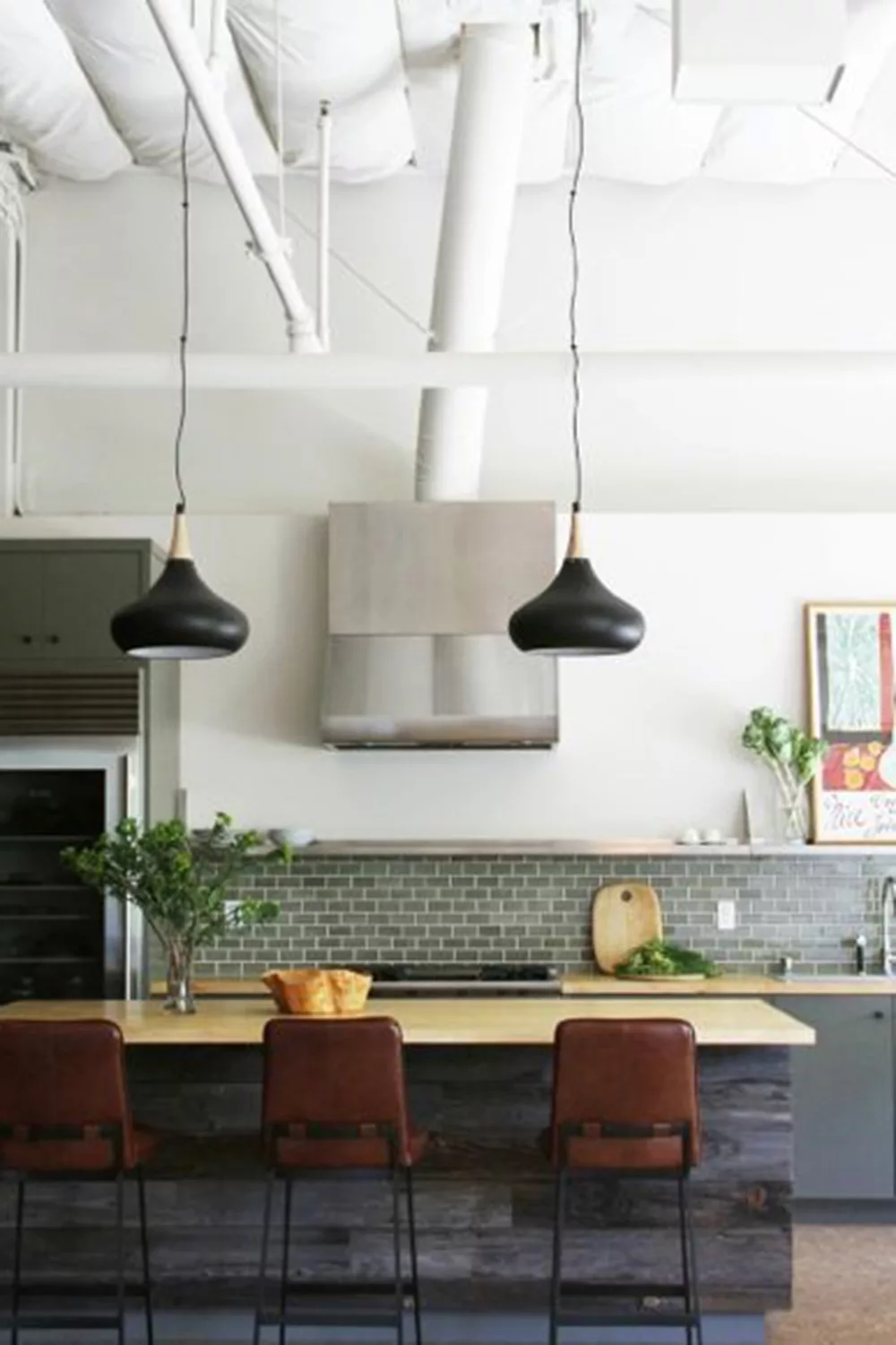
Black pendant lighting HERE – picture source –
¿Cómo elegir la bombilla correcta?
Además de las temperaturas de color, hay otras indicaciones que debe leer en la envoltura de la bombilla para elegir con precisión.
Los Watts (W): miden la energía utilizada. Cuanto más alto es el número, la bombilla consume mas energía.
Los Lúmenes (lm): indica el brillo de la bombilla. Cuanto mayor sea el valor, más iluminación dara la bombilla.
También es necesario tener en cuenta la vida útil de la bombilla. Una bombilla halógena dura de dos a cuatro años, una bombilla de ahorro de energía más allá de los seis años, y una bombilla LED puede durar más de 20 años.
Cuando compras bombillas, verás que en el paquete indica qué tipo de color de luz emite (K), cuánto consume (W) y qué tan brillante es la luz (lm), así que al elegir tus bombillas (aunque no lo creas es importante para la decoracion) tenga en cuenta:
- La intensidad de la luz (lm): ¿Necesita una luz muy brillante, para una área de trabajo o una cocina, o prefiere una luz suave y relajante, para una sala de estar o un dormitorio?
- El entorno que desea crear (K): la luz cálida es ideal para entornos acogedores y cálidos, la luz fría es mejor para entornos de trabajo.
- El consumo de energía (W): en las salas de estar donde las lámparas permanecen encendidas durante mucho tiempo, es preferible elegir bombillas con un bajo consumo de energía, como un LED o una bombilla de bajo consumo.
- El tiempo de encendido: las bombillas LED se encienden inmediatamente pero las bombillas de ahorro de energía tardan varios segundos en alcanzar la ignición total, por lo que no son las mejores para áreas de paso donde la luz se enciende y se apaga rápidamente como corredores, despensas, closets etc.
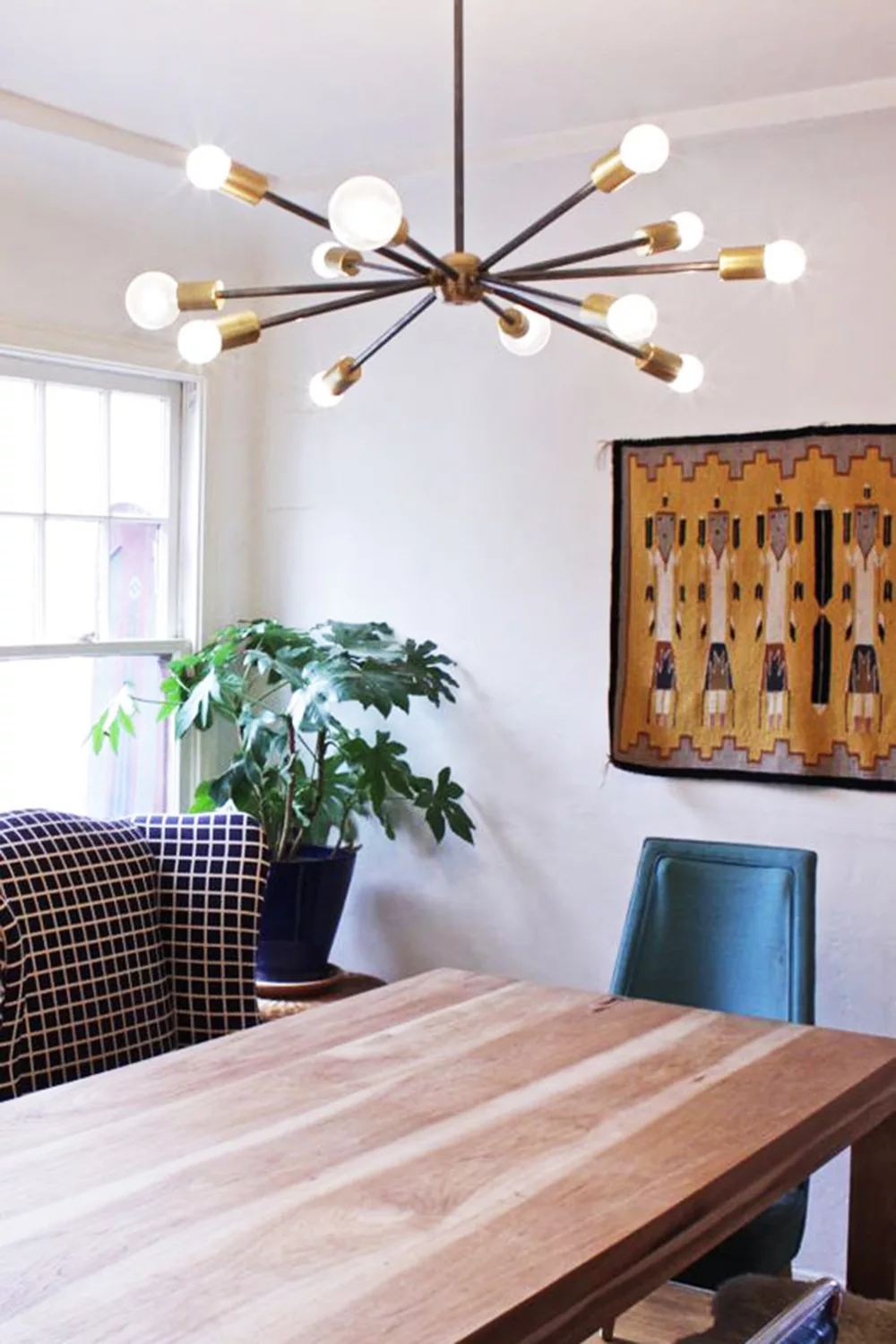
Mid-century chandelier HERE – picture source –
Los diferentes tipos de iluminación y sus funciones
Iluminación general
La iluminación general tiene una función práctica, que es iluminar todo el espacio de manera uniforme. Por lo general, es la luz que enciendes con el interruptor al lado de la puerta, como ejemplo tienes la lámpara que cuelga del techo, el candelabro o la iluminación empotrada.
Iluminación de acento
La luz ambiental es más suave y sirve para dar un ambiente más cálido y relajado a tu decoración. Es una iluminación difusa que crea un ambiente más oscuro que el general. Se puede crear una atmósfera acogedora utilizando una lámpara montada en la pared, una lámpara de pie o una lámpara de mesa. Puedes privilegiar pantallas de pantallas de tela, y también puede usar un atenuador para ajustar la intensidad de la luz si es necesario.
Iluminación puntual
Se ilumina una área específica donde se realiza una función específica, como una luz en la parte superior de la mesa de comedor, una lámpara en un escritorio o las luces en la parte superior de la encimera de la cocina son algunos ejemplos. Es preferible elegir una luz direccional y con buen brillo.
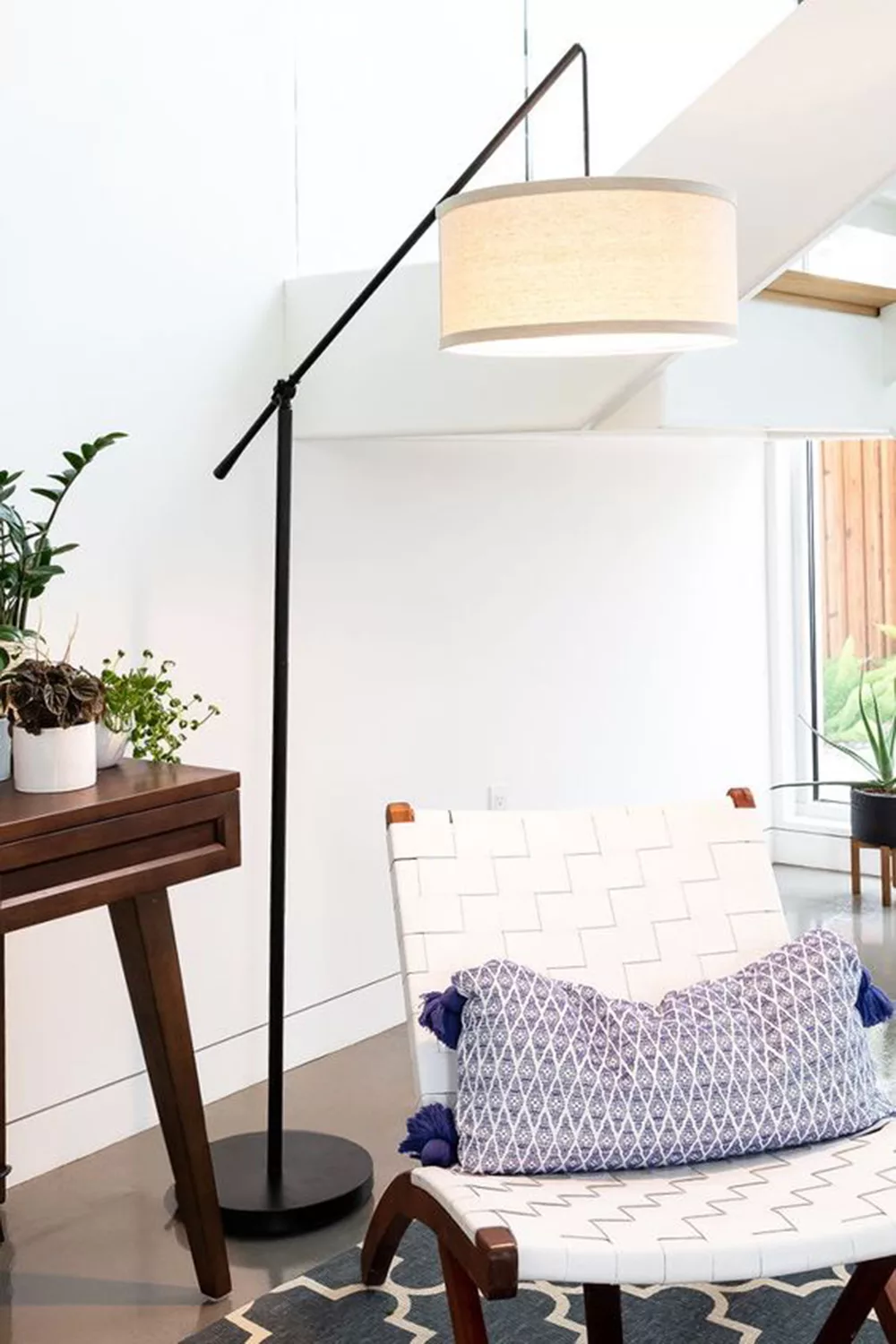
Floor lamp HERE – picture source –
Cómo configurar tu iluminación?
Ahora que sabe cómo elegir bombillas y donde se usan los diferentes tipos de iluminación, aquí van lo que necesitas saber para configurar la iluminación de una habitación.
Piensas cómo usarás la habitación y qué tarea quieres desenvolver en el espacio. Házte las siguientes preguntas para decidir qué tipo de iluminación necesitas:
- ¿Será necesario iluminar algún área en particular? Como un mostrador, una mesa o un rincón de lectura.
- ¿Cuál es el estado de ánimo general que desea darle a la pieza? ¿Necesitas una iluminación máxima para realizar fácilmente ciertas tareas, como en la cocina o en el baño? O es más bien una pieza de relajación en la que puedes privilegiar una iluminación más acogedora, como una sala de estar o un rincón de TV?
- ¿Qué tan grande es la habitación? ¿Hay una iluminación de techo suficiente para la iluminación general? ¿Qué esquina de la habitación quieres resaltar con una iluminación de acento? ¿Vas a necesitar una illuminacion punctual? ¿Dónde la vas a colocar?
- Si trabajas en la renovación de una habitación, checa la ubicación de los enchufes para organizar el espacio, a nadie le gusta tener extensiones eléctricas en cada esquina.
Es normal usar dos o tres tipos de iluminación en cada habitación. Evites iluminar demasiado una esquina y dejar otra completamente oscura. Intentas distribuir los diferentes tipos de lámparas en toda la sala, para resaltar las piezas de decoración importantes. No caiga en exceso tampoco, y trata de respetar una cierta unidad de estilo entre cada lampara.
Puedes colocar diferentes lámparas a diferentes alturas, puedes jugar con el espacio vertical para aprovechar al máximo tu decoración. La luz puede transformar visualmente el espacio. Por ejemplo, poner lámparas que emiten luz hacia el techo hace que la habitación parezca más grande y colocar lámparas de techo que cuelgan bajas hace que los techos parezcan más altos.
Eliges las lámparas que iluminan el espacio por la noche y que son bonitas el día, considera estos dos aspectos al comprar. No quieres un candelabro precioso pero que apenas ilumine por la noche, o viceversa, una linterna de papel que ilumina bien pero que carezca de estilo (incluso si la customisas con un buen DIY :).
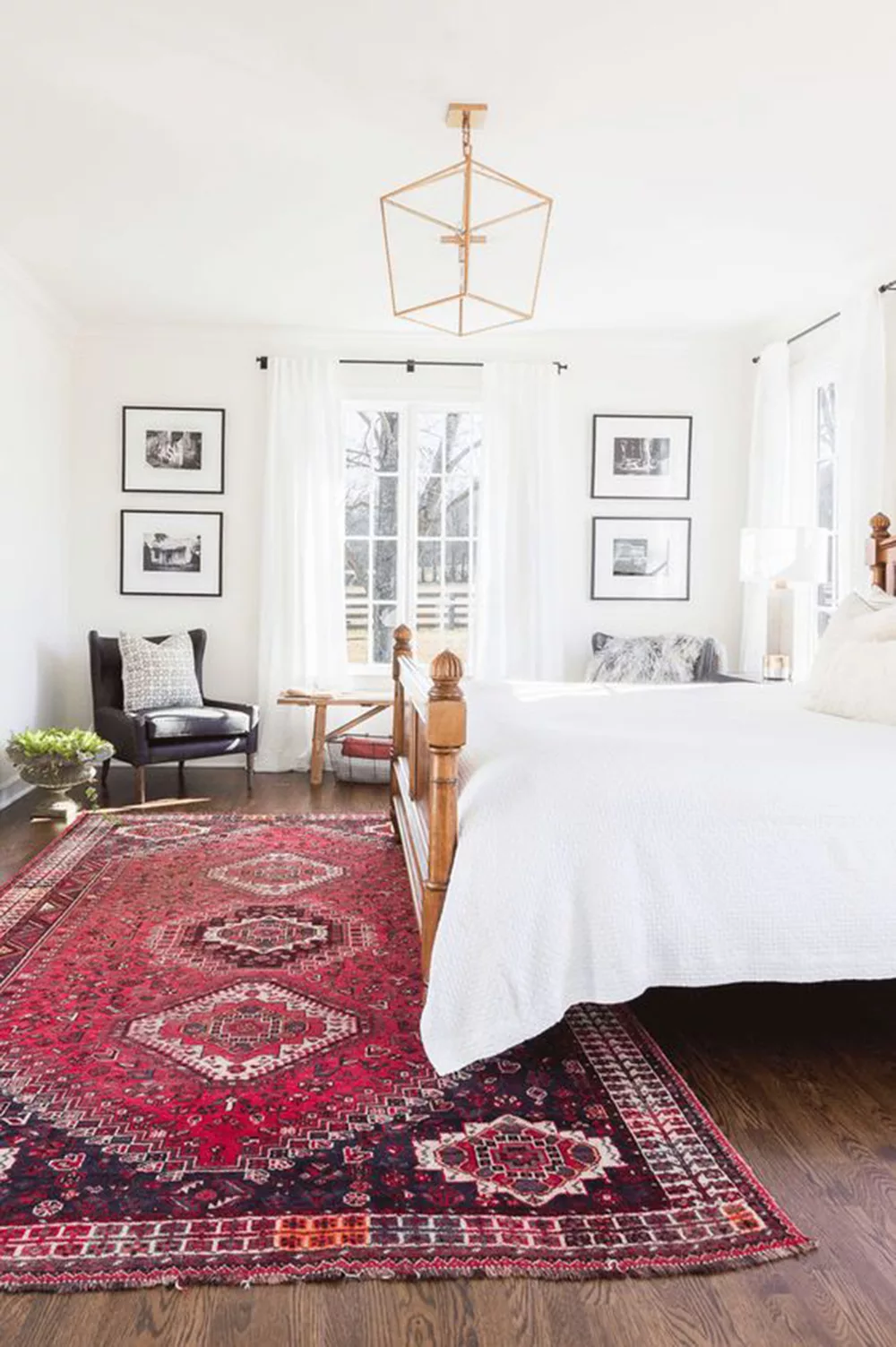
Wire ceiling lamp HERE – picture source –
Una habitación a la vez
Te doy una lista de la iluminación habitual que se coloca en cada habitación. La lista no es exhaustiva y puedes adaptarla según tus necesidades. Es solo para ayudarte a pensar sobre los diferentes usos de cada habitación y las diferente iluminaciónes que generalmente requiere.
Sala de estar: Iluminación general, luz ambiental en mesas laterales o aparador, luz puntual para un rincón de lectura, como una lámpara de pie, por ejemplo.
Comedor: iluminación general, luz colgante sobre la mesa, posiblemente luz ambiente en el tocador.
Cocina: iluminación general brillante, iluminación debajo de los gabinetes, luz colgante sobre la barra o la encimera.
Dormitorio: iluminación general suave, luz puntual en las mesitas de noche.
Cuarto de baño: Iluminación general, luz puntual arriba del lavabo, como una aplique de pared. Prefiere un color de luz neutral para este espacio, es la luz más cercana a la luz natural exterior y proporciona una mejor visión de los colores, lo que es conveniente para combinar la ropa o maquillarse.
Oficina: iluminación general brillante, luz puntual en el escritorio y para un rincón de lectura si es necesario.
Sala de TV: iluminación general suave, luz ambiental en una mesa auxiliar o mueble. Presta atención al reflejo de las lámparas en la pantalla.
Entrada y pasillos: iluminación general, también puedes agregar una luz ambiental que permanezca encendida si no te gusta los corredores oscuros.
